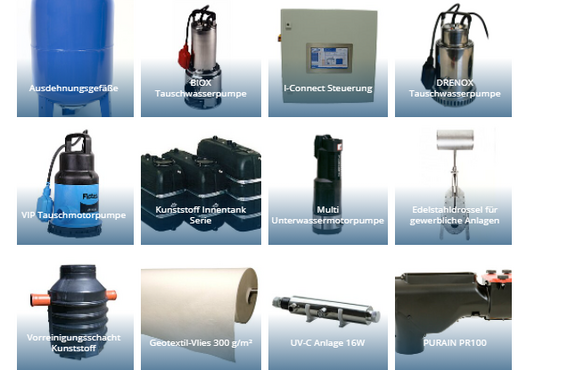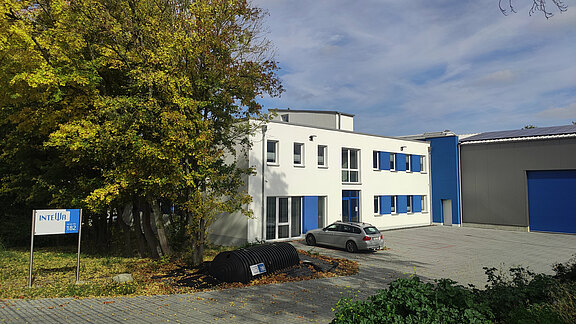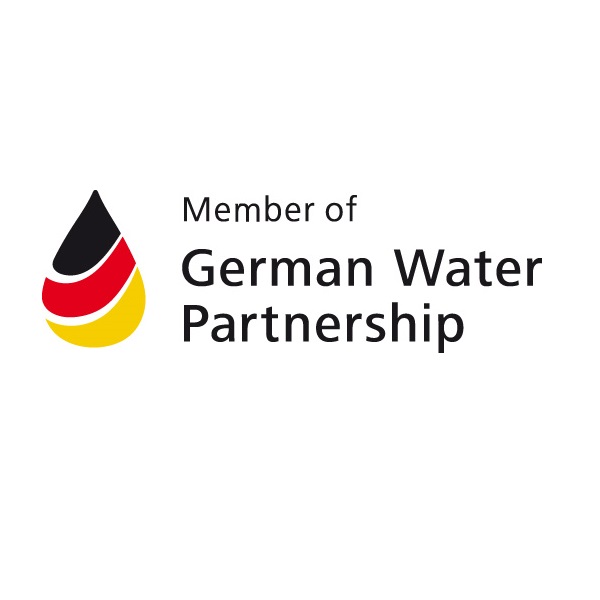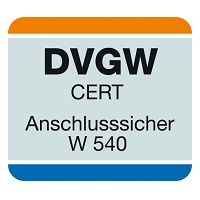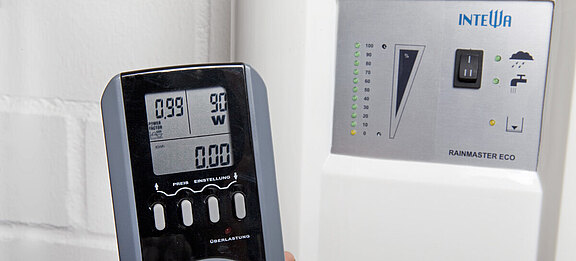
The most economical rainwater unit in the world
In comparision on average, the INTEWA RAINMASTER Eco effectively saves more than 75% energy.
Several systems were analyzed within the scope of an fbr (German Association for Rainwater Harvesting and Water Utilisation) approved investigation on the power consumption of rainwater units. If all the rainwater units in Germany were equipped with the INTEWA RAINMASTER Eco instead of existing pumps, almost 100 GWh of power per year could be saved.
"INTEWA is going in a new, intelligent way with the RAINMASTER Eco. Its new diaphragm pump technology distinguishes it from conventional centrifugal pumps, which are power-hungry at approximately 900 Watt power input. Think on this: toilet flushing requires as little as 5 L/min to fill the tank, while a centrifugal pump delivers 80 L/min, completely excessive and a waste of 90% of the pump energy. The performance of the RAINMASTER Eco diaphragm pump in comparison is perfectly optimized for typical household use. In principle, the diaphragm pump resembles the human heart: an elastic diaphragm is moved by an eccentric tappet. On the downward stroke, it sucks liquid through the inlet valve. On the upward stroke, the diaphragm pushes the liquid out of the pump head via the outlet valve. It is used both in small applications (ie. in dosing systems) as well as in large-scale applications (ie. the food and pharmaceutical industries). Diaphragm pumps ensure low-wear operation and a safe shield between the drive system and the pumped medium."
RAINAMSTER Favorit SC, minimal power consumption, quiet, durable
The RAINMASTER Favorit SC with speed control, already meet the strict efficiency standards of the European Ecodesign Directive for Energy-using Products (EuP). For almost all motors with an output between 0.75 and 375 kW, strict efficiency standards are stipulated here, which must be implemented in the coming years. Unregulated pumps, on the other hand, always run at their maximum power regardless of demand. This can be compared to a car that always runs at full throttle and whose speed would be controlled only with the brake. Since usually only a few consumers are running at the same time, speed control can save up to 40% energy. The low speeds at which the speed-controlled pumps in the process water plants predominantly run cause significantly less wear in the electronic components and the pump. This increases the service life of the plant by an estimated 40 %.
The following table shows the savings potential based on the flow rate:
| flow rate [l/min] | 5 | 10 | 20 |
| without speed control [kW] | 0,656 | 0,733 | 0,777 |
| with speed control [kWh] | 0,276 | 0,617 | 0,686 |
| savings [%] | 58 | 16 | 12 |


